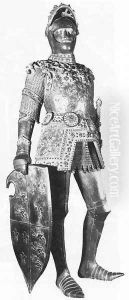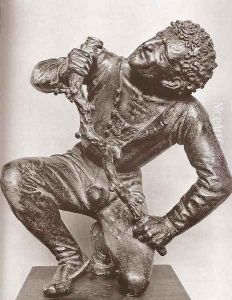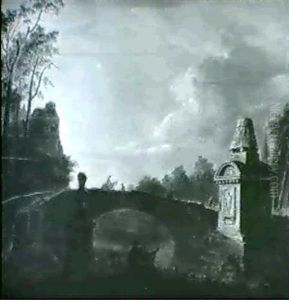Peter Vischer the Elder Paintings
Peter Vischer the Elder was a renowned German sculptor, born in 1455 in Nuremberg, a city that was then one of the centers of the Renaissance north of the Alps. His family name was originally Wyscher, but it became Vischer. He inherited the family workshop from his father, Hermann Vischer, and it became one of the most productive and creative artistic workshops in Germany during the late Gothic period.
Peter Vischer the Elder is best known for his work in bronze. His most famous work is the monumental brass tomb of Saint Sebaldus in the St. Sebaldus Church in Nuremberg, which he completed in 1519 after more than a decade of labor. This masterpiece of late Gothic art features figures of the apostles and a series of smaller panels depicting scenes from the saint's life. The shrine is a remarkable example of Vischer's skill in combining Gothic and Renaissance elements into a harmonious whole.
The Vischer workshop produced a wide range of products, including small-scale sculptures, reliefs, and decorative objects. Vischer's work is characterized by its fine detailing and the lifelike quality of his figures. His style evolved over time, showing a growing influence of the Italian Renaissance, which is evident in the classical proportions and the more relaxed postures of the figures he sculpted later in his career.
Peter Vischer the Elder was also an innovative businessman. He was one of the first in his field to use prints to advertise his workshop's services, distributing engravings that showed his designs. He employed a large number of artisans, including his five sons, who continued the family tradition of artistry. Peter Vischer the Elder died in 1529 in Nuremberg. His legacy lived on through his sons and the many works that continue to be admired for their craftsmanship and beauty.


